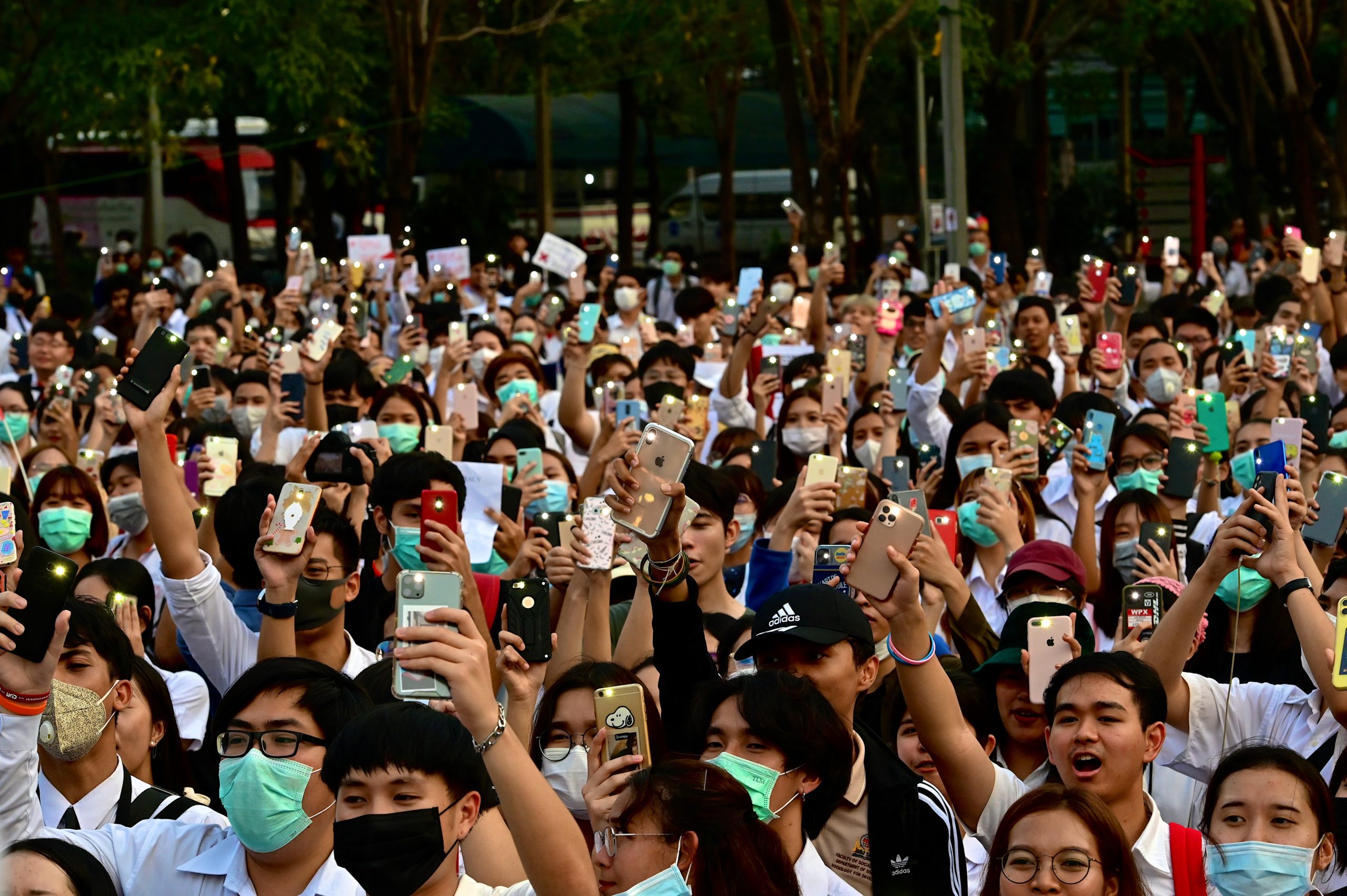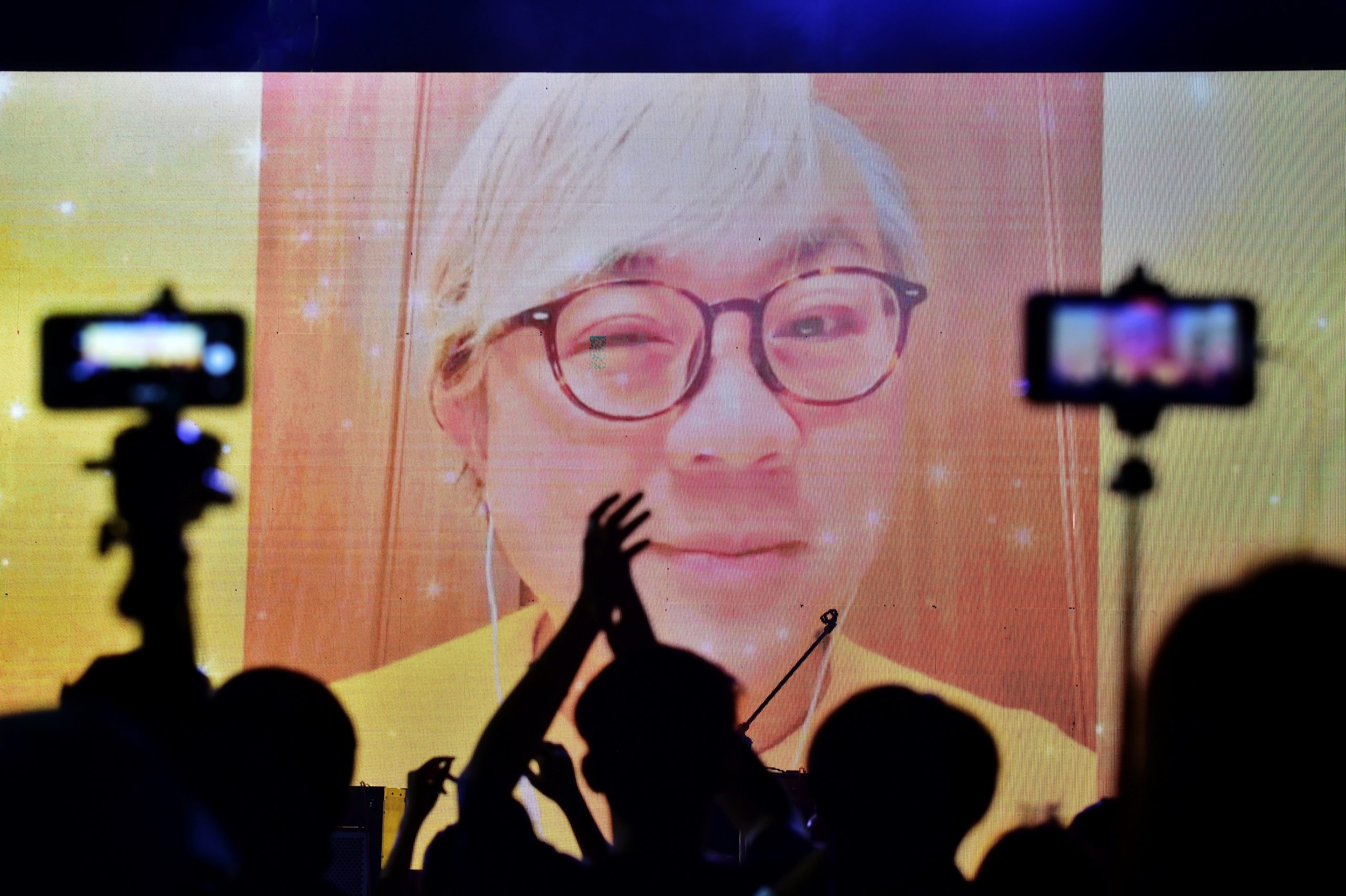In Thailand, the ongoing cat and mouse game between the state and protesting young Thais has extended to the press landscape, challenging the traditional control the government once had over the media.
Historically, Thailand has long had a restrictive media environment, especially concerning topics related to the monarchy. And though the traditional, formal press has endured and adapted to Thailand’s speech restrictions, with the government able to monitor and control what is being aired, recent months have shown that the norm is being increasingly challenged.
For the better part of this year with only brief respite due to the Covid-19 outbreak, a swelling number of protestors have been calling for an overhaul of Thailand’s entrenched, military-installed system and the resignation of Prime Minister Prayuth Chan-ocha, who first took power through the 2014 military coup.
Under a state of emergency declared on 15 October, but lifted just a week later after being defied nightly by thousands of protestors, the government tried to chill media coverage of the demonstrations by claiming that the reporting entailed a “threat to national security”.
Thai police aimed specifically to close popular online outlets Voice TV, Prachatai, the Reporters and the Standard, all of which had gone all-in on livestreaming the demonstrations – mostly on Facebook – as they were happening. But while the protests and their revolutionary tone only grew in volume in response to the emergency decree, the Prayuth-led government was forced to relent.
On 22 October, the court lifted its order for the closure of the four online media platforms. The decision marked a reversal from an initial judgement made just earlier in the week that gave the state permission to shutter Voice TV, a news outlet linked with former Prime Minister Thaksin Shinawatra, also ousted by a coup in 2006.
Pravit Rojanaphruk, a veteran journalist and reporter at Khaosod English, said the crackdown has been motivated by the government’s fear of losing its grip.
“They feel that the situation is getting out of their control,” Pravit told the Globe. “Now with the press reporting mostly what we would describe as Facebook live-streaming for a lengthy period of time, I think there are concerns amongst the powers that be that these kinds of reports could encourage or embolden the protestors, and eventually the government will no longer be able to keep power.”
Pravit is no stranger to state unease with a free press. A prominent advocate of democratic norms and governance, he was arrested for his journalism during the 2014 coup, was detained twice after by the ruling junta for an ‘attitude adjustment’ and, in 2017, was charged with sedition for Facebook posts he’d written two years earlier questioning the legitimacy of the military government.
His own case showed that social media platforms were not entirely safe spaces for communication. Even still, Thai youth have, over the past years, increasingly gone online to organise themselves and develop political rhetoric challenging the structure of the state. Twitter has emerged as a favourite platform for the movement, which has made use of its relative anonymity and open forum to share coded opinions on the monarchy and the military-backed government through viral memes and hashtags.
Not long ago, critics pointed to the online behaviour as a weak stand-in for physical action. But now, the mobilising power of that digital communication is on full display, both in driving the masses into the streets and also in documenting what goes on there.
Despite authorities’ attempts to limit press freedoms, live streaming is taking over Thailand. During intensifying protests, both citizen and professional journalists have been sharing events on the ground in real-time, displaying political rhetoric that was once-unthinkable, such as public demands to reform the monarchy, and displaying police brutality for audiences across the world.

Though the traditional Thai press is still “very shy” and “afraid” to speak about the monarchy, Pravit said that protesters are taking the role of citizen journalists by doing the reporting themselves with agenda-setting hashtags and livestreaming on social media.
Live-streaming through social media especially is breaking a number of Thai norms, Pravit explained, as it “cuts through a lot of censorship and self-censorship” that cannot be edited.
“You may hear people chanting something against the king, or calling for the establishment of the republic of Thailand, or holding placards against the king,” Pravit said. “The protesters have taken the additional steps, they’re already way ahead. And that’s why reporting about them live has become an issue that the government wants to suppress.”
When the police doused protesters with water cannons, laced with tear gas and blue dye, the moment was live streamed by a handful of online news outlets and protesters at the scene, one being Kitti Pantapak, a reporter at Prachatai. Within moments, the scene went viral, viewed on screens across the country and inciting anger towards police actions.
Pantapak was arrested shortly after streaming the clash while in front of a shopping centre in Bangkok just off from the scene. At the time of his arrest, Kitti wore an armband from the Thai Journalists Association identifying him as a member of the press.
We put out a call saying ‘If you have pictures just send them to us.’ We are relying on our audience for the new model of protests, because it’s not possible for us to go to every location
Anna Lawattanatrakul, another Prachatai reporter and editor, told the Globe the arrest had concerned her, given that staff at her publication always wear the press armbands clearly distinguishing themselves from protestors.
With only two full-time reporters for Prachatai English, the outlet has sought assistance from the public.
“When Free Youth and the Thammasat group announced that everyone should go to the nearest BTS station, we realised we can’t work with something like that because Prachatai has only two full-time [English] reporters. We put out a call saying ‘If you have pictures just send them to us.’ We are relying on our audience for the new model of protests, because it’s not possible for us to go to every location,” Anna said.
But this form of citizen journalism has its drawbacks, and without a concerted effort to fact-check information as it spreads online, rumours can quickly gain momentum.
“Sometimes, people could tweet things like, ‘I see this many police cars coming,’ and we can’t publish anything like that until we get someone in the field to go and verify it,” Anna said.
Though this blossoming protest era has added to the urge for officials to monitor the press, Thai authorities have long had a limited tolerance for free expression, with the press-freedom trajectory sloping steadily downwards in recent years.
In the 2020 World Press Freedom Index released in April, Thailand’s press freedom ranked 140 of 180 globally, a drop of four places on the year prior. Reporters sans Frontiere, the index’s authors, noted “any criticism of the government is liable to lead to harsh reprisals facilitated by draconian legislation and a justice system that follows orders”.
Thailand currently has a strict lese majeste law in which criticism of the monarchy may be punished with harsh legal reprisals. In 2019, a cyber-security law was approved by the National Legislative Assembly which gives authorities the ability to crack down on online media.
This month, under the now-lifted week-long state of emergency, the government also banned protestors from taking selfies at protests, or even ‘checking in’ to protest locations on social media. Violations could lead up to two years of imprisonment. The Digital Economy and Society Ministry, in charge of handling this, has already identified more than 300,000 pieces of online content that it deems threatening to national security.
Prachatai editor and reporter Pongpan Chumjai said that members of the Thai media are becoming more active in pushing back against media censorship.
“Compared with the last 10 years, all media associations are quite active in protecting press freedom and the right of citizens to access information,” he said.
Pongpan added that even though Prachatai is not a member of any media association, six Thai media associations released messages of support for Kitti when he was arrested last week.
As police arrested key protest leaders, the past week has seen the pro-democracy movement become increasingly decentralised. Now, with attempts to muzzle the traditional press, the role of reporting is falling on citizens, sharing information and able to reach a large audience by including a protest-related hashtag.
This crowd-sourced approach to communication, with its dispersed nature, will prove much harder to stifle.
“Things are really changing,” Pravit said. “I can feel the winds of change blowing.”


